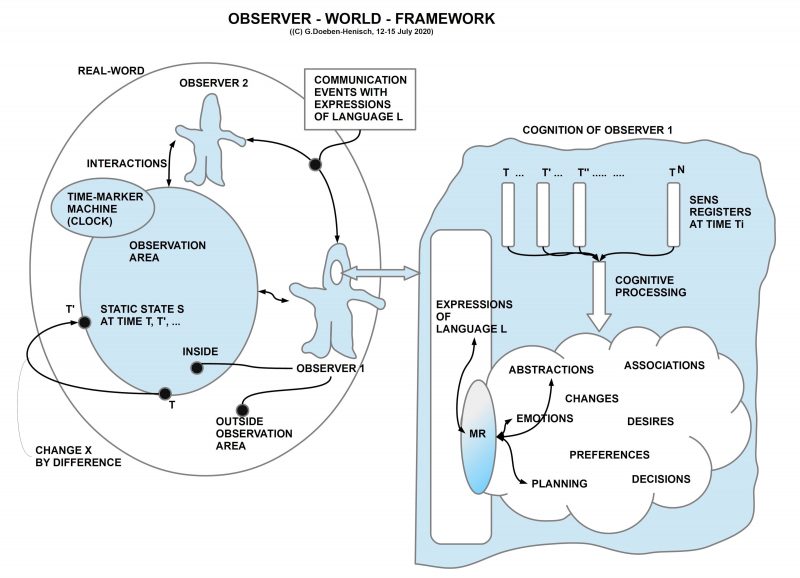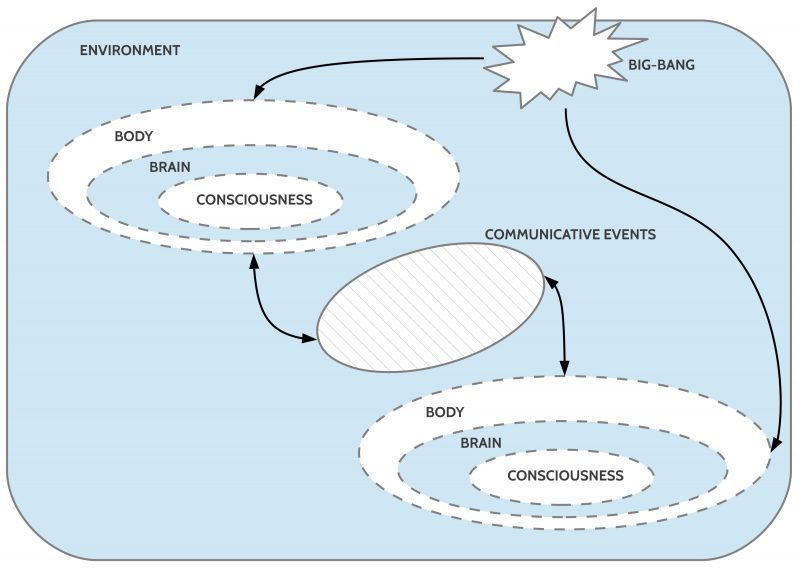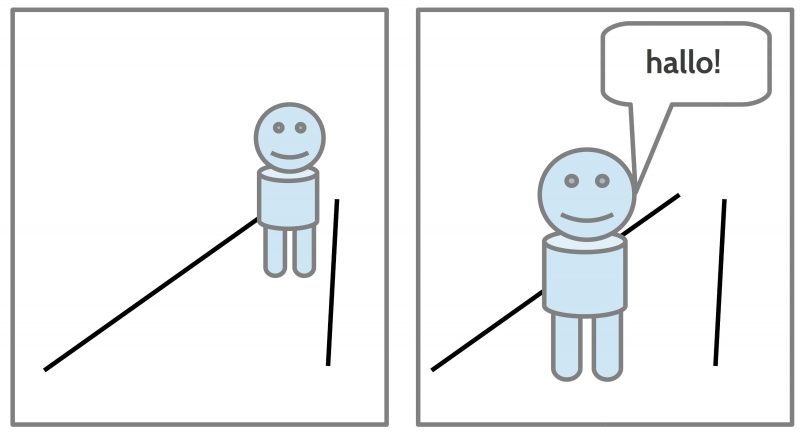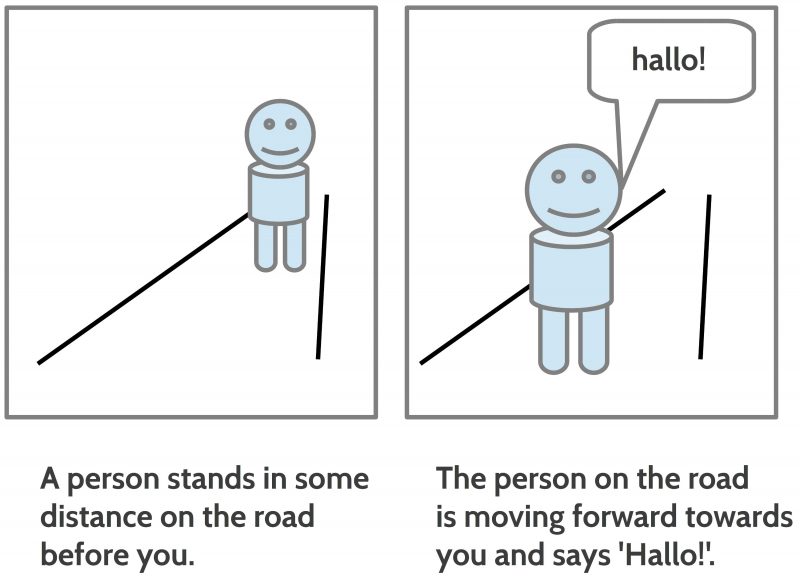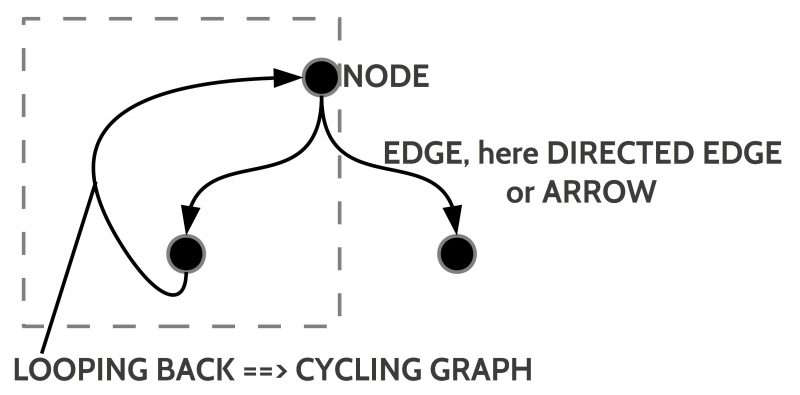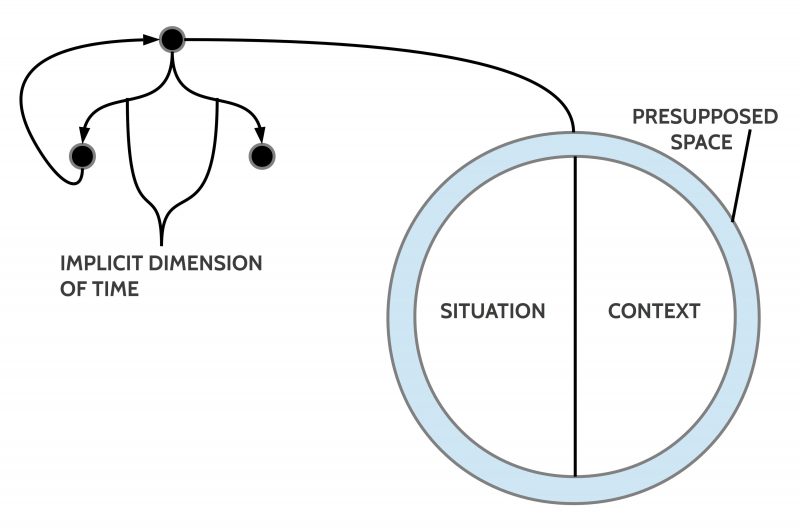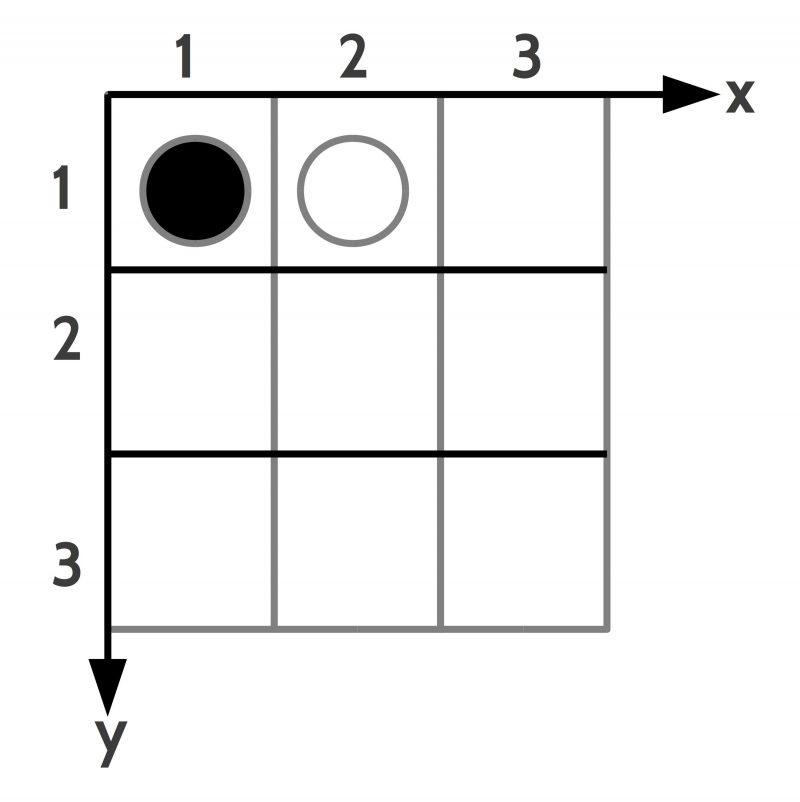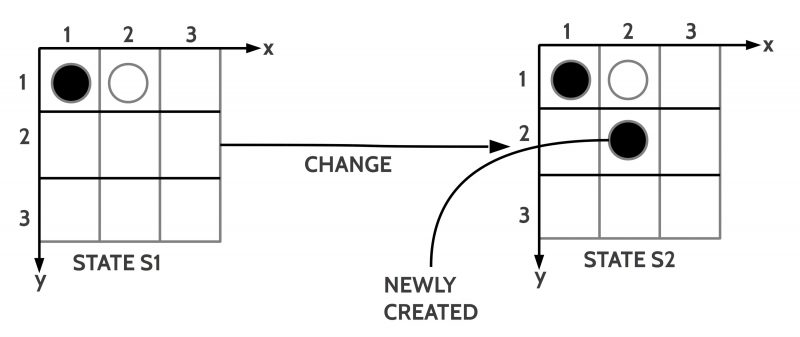(June 20, 2023 – June 22, 2023)
(This text is a translation from the German blog of the author. The translation is supported by the deepL Software)
CONTEXT
The meaning of and adherence to moral values in the context of everyday actions has always been a source of tension, debate, and tangible conflict.
This text will briefly illuminate why this is so, and why it will probably never be different as long as we humans are the way we are.
FINITE-INFINITE WORLD
In this text it is assumed that the reality in which we ‘find’ ourselves from childhood is a ‘finite’ world. By this is meant that no phenomenon we encounter in this world – ourselves included – is ‘infinite’. In other words, all resources we encounter are ‘finite’. Even ‘solar energy’, which is considered ‘renewable’ in today’s parlance, is ‘finite’, although this finiteness outlasts the lifetimes of many generations of humans.
But this ‘finiteness’ is no contradiction to the fact that our finite world is continuously in a ‘process of change’ fed from many sides. An ‘itself-self-changing finiteness’ is with it, a something which in and in itself somehow ‘points beyond itself’! The ‘roots’ of this ‘immanent changeability’ are to a large extent perhaps still unclear, but the ‘effects’ of the ‘immanent changeability’ indicate that the respective ‘concrete finite’ is not the decisive thing; the ‘respective concrete finite’ is rather a kind of ‘indicator’ for an ‘immanent change cause’ which ‘manifests itself’ by means of concrete finites in change. The ‘forms of concrete manifestations of change’ can therefore perhaps be a kind of ‘expression’ of something that ‘works immanently behind’.
In physics there is the pair of terms ‘energy’ and ‘mass’, the latter as synonym for ‘matter’. Atomic physics and quantum mechanics have taught us that the different ‘manifestations of mass/matter’ can only be a ‘state form of energy’. The everywhere and always assumed ‘energy’ is that ‘enabling factor’, which can ‘manifest’ itself in all the known forms of matter. ‘Changing-matter’ can then be understood as a form of ‘information’ about the ‘enabling energy’.
If one sets what physics has found out so far about ‘energy’ as that form of ‘infinity’ which is accessible to us via the experiential world, then the various ‘manifestations of energy’ in diverse ‘forms of matter’ are forms of concrete finites, which, however, are ultimately not really finite in the context of infinite energy. All known material finites are only ‘transitions’ in a nearly infinite space of possible finites, which is ultimately grounded in ‘infinite energy’. Whether there is another ‘infinity’ ‘beside’ or ‘behind’ or ‘qualitatively again quite different to’ the ‘experienceable infinity’ is thus completely open.”[1]
EVERYDAY EXPERIENCES
Our normal life context is what we now call ‘everyday life’: a bundle of regular processes, often associated with characteristic behavioral roles. This includes the experience of having a ‘finite body’; that ‘processes take time in real terms’; that each process is characterized by its own ‘typical resource consumption’; that ‘all resources are finite’ (although there can be different time scales here (see the example with solar energy)).
But also here: the ’embeddedness’ of all resources and their consumption in a comprehensive variability makes ‘snapshots’ out of all data, which have their ‘truth’ not only ‘in the moment’, but in the ‘totality of the sequence’! In itself ‘small changes’ in the everyday life can, if they last, assume sizes and achieve effects which change a ‘known everyday life’ so far that long known ‘views’ and ‘long practiced behaviors’ are ‘no longer correct’ sometime: in that case the format of one’s own thinking and behavior can come into increasing contradiction with the experiential world. Then the point has come where the immanent infinity ‘manifests itself’ in the everyday finiteness and ‘demonstrates’ to us that the ‘imagined cosmos in our head’ is just not the ‘true cosmos’. In the end this immanent infinity is ‘truer’ than the ‘apparent finiteness’.
HOMO SAPIENS (WE)
Beside the life-free material processes in this finite world there are since approx. 3.5 billion years the manifestations, which we call ‘life’, and very late – quasi ‘just now’ – showed up in the billions of life forms one, which we call ‘Homo sapiens’. That is us.
The today’s knowledge of the ‘way’, which life has ‘taken’ in these 3.5 billion years, was and is only possible, because science has learned to understand the ‘seemingly finite’ as ‘snapshot’ of an ongoing process of change, which shows its ‘truth’ only in the ‘totality of the individual moments’. That we as human beings, as the ‘latecomers’ in this life-creation-process’, have the ability to ‘recognize’ successive ‘moments’ ‘individually’ as well as ‘in sequence’, is due to the special nature of the ‘brain’ in the ‘body’ and the way in which our body ‘interacts’ with the surrounding world. So, we don’t know about the ‘existence of an immanent infinity’ ‘directly’, but only ‘indirectly’ through the ‘processes in the brain’ that can identify, store, process and ‘arrange’ moments in possible sequences in a ‘neuronally programmed way’. So: our brain enables us on the basis of a given neuronal and physical structure to ‘construct’ an ‘image/model’ of a possible immanent infinity, which we assume to ‘represent’ the ‘events around us’ reasonably well.
THINKING
One characteristic attributed to Homo Sapiens is called ‘thinking’; a term which until today is described only vaguely and very variously by different sciences. From another Homo Sapiens we learn about his thinking only by his way of ‘behaving’, and a special case of it is ‘linguistic communication’.
Linguistic communication is characterized by the fact that it basically works with ‘abstract concepts’, to which as such no single object in the real world directly corresponds (‘cup’, ‘house’, ‘dog’, ‘tree’, ‘water’ etc.). Instead, the human brain assigns ‘completely automatically’ (‘unconsciously’!) most different concrete perceptions to one or the other abstract concept in such a way that a human A can agree with a human B whether one assigns this concrete phenomenon there in front to the abstract concept ‘cup’, ‘house’, ‘dog’, ‘tree’, or ‘water’. At some point in everyday life, person A knows which concrete phenomena can be meant when person B asks him whether he has a ‘cup of tea’, or whether the ‘tree’ carries apples etc.
This empirically proven ‘automatic formation’ of abstract concepts by our brain is not only based on a single moment, but these automatic construction processes work with the ‘perceptual sequences’ of finite moments ’embedded in changes’, which the brain itself also automatically ‘creates’. ‘Change as such’ is insofar not a ‘typical object’ of perception, but is the ‘result of a process’ taking place in the brain, which constructs ‘sequences of single perceptions’, and these ‘calculated sequences’ enter as ‘elements’ into the formation of ‘abstract concepts’: a ‘house’ is from this point of view not a ‘static concept’, but a concept, which can comprise many single properties, but which is ‘dynamically generated’ as a ‘concept’, so that ‘new elements’ can be added or ‘existing elements’ may be ‘taken away’ again.
MODEL: WORLD AS A PROCESS
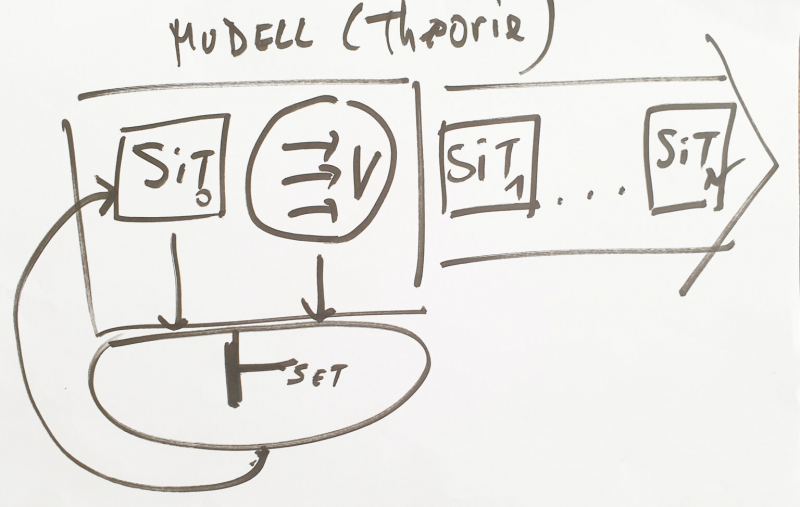
(The words are from the German text)
Although there is no universally accepted comprehensive theory of human thought to date, there are many different models (everyday term for the more correct term ‘theories’) that attempt to approximate important aspects of human thought.
The preceding image shows the outlines of a minimally simple model to our thinking.
This model assumes that the surrounding world – with ourselves as components of that world – is to be understood as a ‘process’ in which, at a chosen ‘point in time’, one can describe in an idealized way all the ‘observable phenomena’ that are important to the observer at that point in time. This description of a ‘section of the world’ is here called ‘situation description’ at time t or simply ‘situation’ at t.
Then one needs a ‘knowledge about possible changes’ of elements of the situation description in the way (simplified): ‘If X is element of situation description at t, then for a subsequent situation at t either X is deleted or replaced by a new X*’. There may be several alternatives for deletion or replacement with different probabilities. Such ‘descriptions of changes’ are here simplified called ‘change rules’.
Additionally, as part of the model, there is a ‘game instruction’ (classically: ‘inference term’), which explains when and how to apply a change rule to a given situation Sit at t in such a way that at the subsequent time t+1, there is a situation Sit* in which the changes have been made that the change rule describes.
Normally, there is more than one change rule that can be applied simultaneously with the others. This is also part of the game instructions.
This minimal model can and must be seen against the background of continuous change.
For this structure of knowledge it is assumed that one can describe ‘situations’, possible changes of such a situation, and that one can have a concept how to apply descriptions of recognized possible changes to a given situation.
With the recognition of an immanent infinity manifested in many concrete finite situations, it is immediately clear that the set of assumed descriptions of change should correspond with the observable changes, otherwise the theory has little practical use. Likewise, of course, it is important that the assumed situation descriptions correspond with the observable world. Fulfilling the correspondence requirements or checking that they are true is anything but trivial.
ABSTRACT – REAL – INDETERMINATE
To these ‘correspondence requirements’ here some additional considerations, in which the view of the everyday perspective comes up.
It is to be noted that a ‘model’ is not the environment itself, but only a ‘symbolic description’ of a section of the environment from the point of view and with the understanding of a human ‘author’! To which properties of the environment a description refers, only the author himself knows, who ‘links’ the chosen ‘symbols’ (text or language) ‘in his head’ with certain properties of the environment, whereby these properties of the environment must also be represented ‘in the head’, quasi ‘knowledge images’ of ‘perception events’, which have been triggered by the environmental properties. These ‘knowledge images in the head’ are ‘real’ for the respective head; compared to the environment, however, they are basically only ‘fictitious’; unless there is currently a connection between current fictitious ‘images in the head’ and the ‘current perceptions’ of ‘environmental events’, which makes the ‘concrete elements of perception’ appear as ‘elements of the fictitious images’. Then the ‘fictitious’ pictures would be ‘fictitious and real’.
Due to the ‘memory’, whose ‘contents’ are more or less ‘unconscious’ in the ‘normal state’, we can however ‘remember’ that certain ‘fictitious pictures’ were once ‘fictitious and real’ in the past. This can lead to a tendency in everyday life to ascribe a ‘presumed reality’ to fictional images that were once ‘real’ in the past, even in the current present. This tendency is probably of high practical importance in everyday life. In many cases these ‘assumptions’ also work. However, this ‘spontaneous-for-real-holding’ can often be off the mark; a common source of error.
The ‘spontaneous-for-real-holding’ can be disadvantageous for many reasons. For example, the fictional images (as inescapably abstract images) may in themselves be only ‘partially appropriate’. The context of the application may have changed. In general, the environment is ‘in flux’: facts that were given yesterday may be different today.
The reasons for the persistent changes are different. Besides such changes, which we could recognize by our experience as an ‘identifiable pattern’, there are also changes, which we could not assign to a pattern yet; these can have a ‘random character’ for us. Finally there are also the different ‘forms of life’, which are basically ‘not determined’ by their system structure in spite of all ‘partial determinateness’ (one can also call this ‘immanent freedom’). The behavior of these life forms can be contrary to all other recognized patterns. Furthermore, life forms behave only partially ‘uniformly’, although everyday structures with their ‘rules of behavior’ – and many other factors – can ‘push’ life forms with their behavior into a certain direction.
If one remembers at this point again the preceding thoughts about the ‘immanent infinity’ and the view that the single, finite moments are only understandable as ‘part of a process’, whose ‘logic’ is not decoded to a large extent until today, then it is clear, that any kind of ‘modeling’ within the comprehensive change processes can only have a preliminary approximation character, especially since it is aggravated by the fact that the human actors are not only ‘passively receiving’, but at the same time always also ‘actively acting’, and thereby they influence the change process by their actions! These human influences result from the same immanent infinity as those which cause all other changes. The people (like the whole life) are thus inevitably real ‘co-creative’ …. with all the responsibilities which result from it.
MORALITY ABOVE ALL
What exactly one has to understand by ‘morality’, one has to read out of many hundreds – or even more – different texts. Every time – and even every region in this world – has developed different versions.
In this text it is assumed that with ‘moral’ such ‘views’ are meant, which should contribute to the fact that an individual person (or a group or …) in questions of the ‘decision’ of the kind “Should I rather do A or B?” should get ‘hints’, how this question can be answered ‘best’.
If one remembers at this point what was said before about that form of thinking which allows ‘prognoses’ (thinking in explicit ‘models’ or ‘theories’), then there should be an ‘evaluation’ of the ‘possible continuations’ independent of a current ‘situation description’ and independent of the possible ‘knowledge of change’. So there must be ‘besides’ the description of a situation as it ‘is’ at least a ‘second level’ (a ‘meta-level’), which can ‘talk about’ the elements of the ‘object-level’ in such a way that e.g. it can be said that an ‘element A’ from the object-level is ‘good’ or ‘bad’ or ‘neutral’ or with a certain gradual ‘tuning’ ‘good’ or ‘bad’ or ‘neutral’ at the meta-level. This can also concern several elements or whole subsets of the object level. This can be done. But for it to be ‘rationally acceptable’, these valuations would have to be linked to ‘some form of motivation’ as to ‘why’ this valuation should be accepted. Without such a ‘motivation of evaluations’ such an evaluation would appear as ‘pure arbitrariness’.
At this point the ‘air’ becomes quite ‘thin’: in the history so far no convincing model for a moral justification became known, which is in the end not dependent from the decision of humans to set certain rules as ‘valid for all’ (family, village, tribe, …). Often the justifications can still be located in the concrete ‘circumstances of life’, just as often the concrete circumstances of life ‘recede into the background’ in the course of time and instead abstract concepts are introduced, which one endows with a ‘normative power’, which elude a more concrete analysis. Rational access is then hardly possible, if at all.
In a time like in the year 2023, in which the available knowledge is sufficient to be able to recognize the interdependencies of literally everybody from everybody, in addition the change dynamics, which can threaten with the components ‘global warming’ the ‘sustainable existence of life on earth’ substantially, ‘abstractly set normative terms’ appear not only ‘out of time’, no, they are highly dangerous, since they can substantially hinder the preservation of life in the further future.
META-MORAL (Philosophy)
The question then arises whether this ‘rational black hole’ of ‘justification-free normative concepts’ marks the end of human thinking or whether thinking should instead just begin here?
Traditionally, ‘philosophy’ understands itself as that attitude of thinking, in which every ‘given’ – including any kind of normative concepts – can be made an ‘object of thinking’. And just the philosophical thinking has produced exactly this result in millennia of struggle: there is no point in thinking, from which all ought/all evaluating can be derived ‘just like that’.
In the space of philosophical thinking, on the meta-moral level, it is possible to ‘thematize’ more and more aspects of our situation as ‘mankind’ in a dynamic environment (with man himself as part of this environment), to ‘name’ them, to place them in a ‘potential relations’, to make ‘thinking experiments’ about ‘possible developments’, but this philosophical meta-moral knowledge is completely transparent and always identifiable. The inferences about why something seems ‘better’ than something else are always ’embedded’, ‘related’. The demands for an ‘autonomous morality’, for an ‘absolute morality’ besides philosophical thinking appear ‘groundless’, ‘arbitrary’, ‘alien’ to the ‘matter’ against this background. A rational justification is not possible.
A ‘rationally unknowable’ may exist, exists even inescapably, but this rationally unknowable is our sheer existence, the actual real occurrence, for which so far there is no rational ‘explanation’, more precisely: not yet. But this is not a ‘free pass’ for irrationality. In ‘irrationality’ everything disappears, even the ‘rationally unrecognizable’, and this belongs to the most important ‘facts’ in the world of life.
COMMENTS
[1] The different forms of ‘infinity’, which have been introduced into mathematics with the works of Georg Cantor and have been intensively further investigated, have nothing to do with the experienceable finiteness/ infinity described in the text: https://en.wikipedia.org/wiki/Georg_Cantor . However, if one wants to ‘describe’ the ‘experience’ of real finiteness/ infinity, then one will possibly want to fall back on descriptive means of mathematics. But it is not a foregone conclusion whether the mathematical concepts ‘harmonize’ with the empirical experience standing to the matter.

